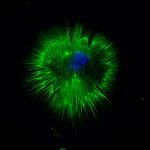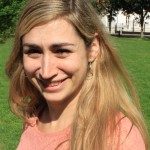Link to Pubmed [PMID] – 24122769
Cold Spring Harb. Symp. Quant. Biol. 2013;78:91-100
In most metazoans, all tissues contain phagocytes “in residence,” generally termed “macrophages” in vertebrates. In contrast to myeloid cells produced continuously by the bone marrow (BM), tissue-resident macrophages develop during embryogenesis together with their tissue of residence, and persist in adulthood, independently of hematopoietic stem cells and the transcription factor Myb. They therefore represent an independent lineage from blood monocytes, dendritic cells, and monocytes/macrophages that are recruited to tissues during inflammation. Tissue-resident macrophage functions are yet to be completely defined. They all share the ability to scavenge toxic compounds, lipids, microorganisms, and dead cells and contribute to tissue remodeling, via phagocytosis and the production of growth factors. In contrast, the production of inflammatory mediators seems to be more associated with BM-derived cells. Tissue-resident macrophages and BM-derived myeloid cells thus differ in developmental origin and functions; the term “macrophages” could be reserved for Myb-independent-resident macrophages to avoid confusion. A genetic and molecular dissection of resident macrophage functions will reveal their roles in tissue metabolism and the maintenance of homeostasis independently of the extravasation of inflammatory leukocytes, and in the control of the recruitment of BM-derived cells in overt inflammation.

